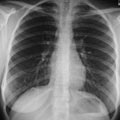Description of the test
X-rays were discovered in 1895. By shining X-rays (a type of radiation) on the body, an image is produced on film.
Areas of the body that are denser, such as bone, appear whiter on the film because they absorb the radiation well. Areas of less dense tissue, such as organs and muscles, appear grey on film. They appear darker because they don't absorb as much of the radiation. Body parts that contain air, such as the lungs, will look quite dark, as they hardly absorb any radiation.
How often should the test be performed?
Your doctor will decide when and how frequently this test is required.
Why is this test performed?
X-rays provide an image of the inside of your body. With results from this test, your doctor can better identify what may be causing a problem and the best way to treat it. X-rays can be performed on virtually any part of the body. The most frequently examined body parts include the chest, abdomen, pelvis, and spine.
X-rays may help your doctor to:
- check for bone fractures
- check for certain bone and joint conditions (e.g., osteoporosis, arthritis)
- find infections in various organs (e.g., pneumonia in the lungs)
- locate tumours in various organs
- find foreign objects that have been swallowed or have become stuck in a wound
- check for tooth or jaw injuries or diseases
- examine the curvature of the spine and locate spinal problems
- check for heart, lung, or abdominal problems
- check the sinuses for infection
Are there any risks and precautions?
There is very low risk of side effects or complications for this test. A single X-ray examination results in a very low radiation dose that is unlikely to cause a significant increased risk of cancer. As a precaution, a technician often places a lead apron over the pelvic area to reduce exposure to X-ray radiation.
If you are pregnant or suspect you are pregnant, tell your doctor or X-ray technician before the test is done. The risk of most diagnostic X-rays to a fetus is small, although it can be harmful at high doses. Discuss with your doctor about what precautions to take to minimize the risk to the baby (e.g., using a lead apron) if the X-ray is necessary.
With some X-rays, a contrast medium or contrast dye may be used to help make some body areas easier to see. This dye, which may contain iodine or barium, may be taken by mouth or given through an intravenous injection or rectal tube. If the contrast medium is injected, you may experience pain, swelling, or redness in the injection area. Very rarely, people may experience allergic reactions to the contrast medium.
Other side effects of the contrast medium include:
- feeling lightheaded
- flushing
- hives
- itchiness
- metallic taste
- nausea
Very rarely, people may experience allergic reactions to the contrast medium.
If you are concerned about any symptoms following this test, speak to your doctor. Take the time to be sure you understand all the risks of complications and side effects as well as any precautions you or your doctor can take to avoid them. Be sure your doctor understands all your concerns.
What happens during the test?
To perform the test, the technician asks you to remain in a specific position. You may need to sit or lie on an examination table. The technician will help keep the tested area still by using a sandbag or pillow. In many cases, you are simply asked to remain in the set position for a short period of time, usually a few seconds.
Try to follow instructions closely to get the most accurate X-ray results. Stay still if the technician asks you to. If you move, the X-ray image will not be clear.
People with an injury may experience pain or discomfort due to staying still, but not from the X-rays themselves. You will not feel the X-rays.
For children, a technician may need to use restraints or other techniques to keep them from moving.
The test may take anywhere from a few minutes to more than an hour depending on the body part being examined and how much preparation is needed beforehand.
How should I prepare for this test?
Before having the X-ray, you need to remove any jewellery and metal objects as well as some or all of your clothing. You will be asked to put on a hospital gown. Store your personal belongings safely.
Tell the doctor or technician if you have ever had an allergic reaction to an X-ray dye.
Tell your doctor or prescriber about all prescription, over-the-counter (non-prescription), and herbal medications you are taking. Also tell them about any medication allergies and medical conditions that you may have.
Ask your doctor or pharmacist whether you need to stop taking any of your medications before the test.
What can I expect after the test?
There are no immediate effects from the X-rays themselves.
If a dye was given rectally before the X-ray, you may experience mild rectal discomfort from the insertion of the rectal tube.
You may be asked to wait for a few minutes after your test so the X-rays can be developed or viewed on a computer. This way, if additional X-rays need to be taken, they can be done while you are still there rather than scheduling another appointment.
Results
A radiologist interprets the X-rays and sends a report to your doctor. With this information, your doctor will determine the type of treatment you need or if more tests are required.
All material copyright MediResource Inc. 1996 – 2024. Terms and conditions of use. The contents herein are for informational purposes only. Always seek the advice of your physician or other qualified health provider with any questions you may have regarding a medical condition. Source: www.medbroadcast.com/procedure/getprocedure/X-Ray



